The Anthracite Coal Strike of 1902
A Quick History Tidbit: When a President Changed Everything
The year was 1902, and America was about to face a crisis that would literally leave the nation out in the cold. You know, because they needed coal to heat their homes. By 1885, a majority of homes had already switched from wood-burning furnaces to coal. So, when 150,000 anthracite coal miners walked off the job in Pennsylvania, they didn’t just stop digging coal—they changed the very relationship between government, workers, and big business forever. And they also left the masses without the fuel to heat their homes.
Aryn is a dedicated genealogist and researcher passionate about uncovering family history and social history. She helps people connect with their heritage and explore historical narratives that shape their identities. Aryn also assists clients in using their research to craft engaging nonfiction and historical stories about their ancestors and other figures. To learn more about this Substack and my love of history, family history, and genealogy — head here! To learn more about the From Research To Novel webinar and Substack — head here.
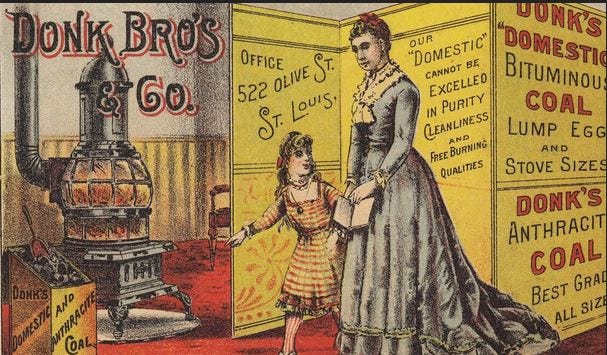
The Heart of America’s Energy
Anthracite coal wasn’t just any fuel. It was the premium heating coal that warmed America’s homes, schools, and hospitals. Unlike softer bituminous coal, which was known for releasing pollutants such as sulfur dioxide, anthracite burned cleanly and hot. This made it essential for heating in major cities from Boston to Chicago.
All of this means that when the miners went on strike in May 1902, they controlled the nation’s winter survival.
The miners weren’t asking for the moon. They wanted a 20% wage increase, an eight-hour workday, and recognition of their union, the United Mine Workers of America. But the mine owners, led by George Baer, a lawyer and the man J.P. Morgan appointed President of the Pennsylvania Reading Railroad after his retirement, refused to even meet with union representatives.
He said, “Anthracite mining is a business and not a religious, sentimental, or academic proposition.” Baer declared that God had given him control of the workers, and he wasn’t about to negotiate with what he saw as troublemakers.
But the miners would not be swayed.
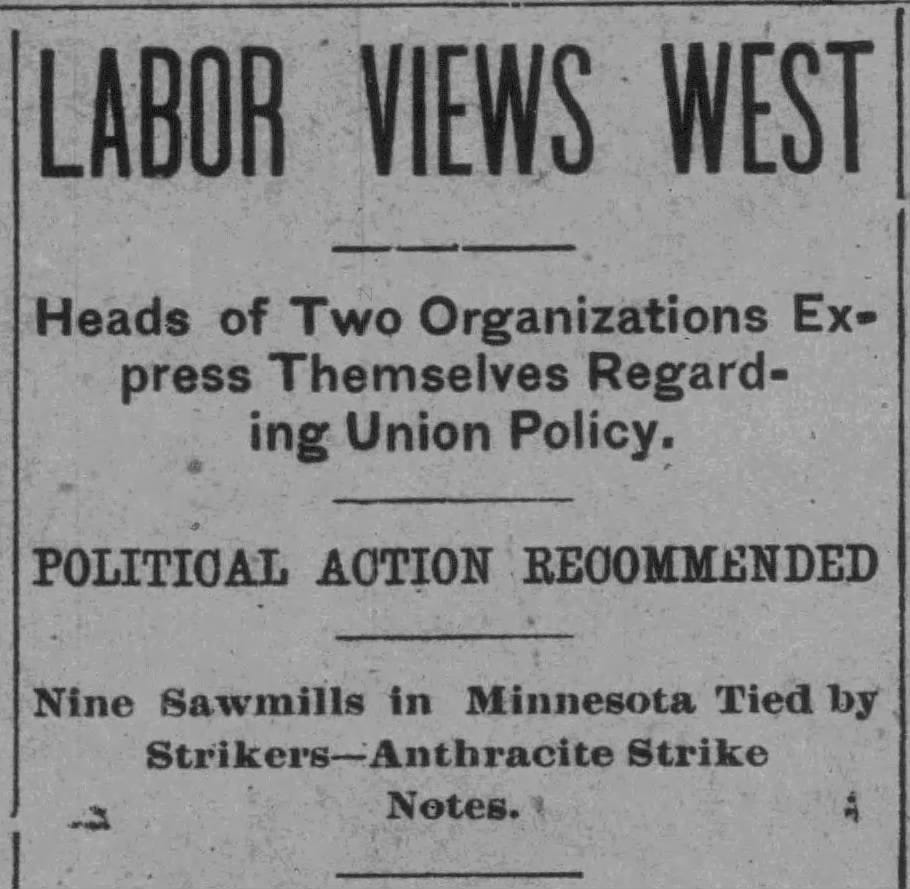
As summer turned to fall, the strike dragged on. Coal prices skyrocketed from $5 to $30 per ton. Schools closed due to a lack of heating fuel. Hospitals ran dangerously low on coal. In Pennsylvania’s coal patch towns—those company-owned settlements where miners’ families lived—the situation grew desperate.
Families faced the cruel irony of shivering in the cold while sitting atop some of America’s richest coal deposits. But they also knew, sometimes, the only way to get what you deserve – a livable wage and the protection of a Union – you have to make sacrifices.
But then things changed.
If you read my piece on the Pullman Strike, when you hear the words, “the President intervenes,” you may automatically think the worst, but you would be wrong. Instead of following in the footsteps of other Presidents who swooped in to protect the wealthy mine owners, President Theodore Roosevelt did something unprecedented. He did what no president had ever done before. Teddy Roosevelt intervened in a labor dispute not to crush the workers, but to mediate between the two sides.
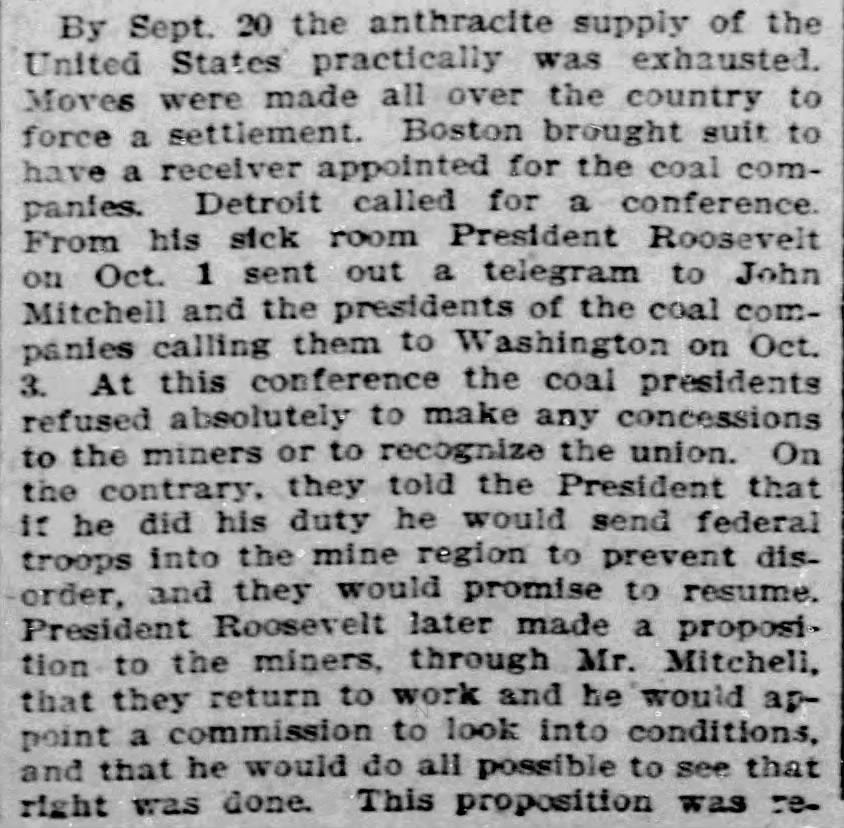
In October 1902, Roosevelt threatened to seize the mines with federal troops if the owners didn’t come to the negotiating table. Needless to say, the mine owners were shocked.
They had expected the traditional presidential response: send in the army to break the strike. Crush the striking masses. Side with the owners.
Instead, Roosevelt forced Baer and the Strikers into arbitration, treating the union as equals worthy of negotiation.
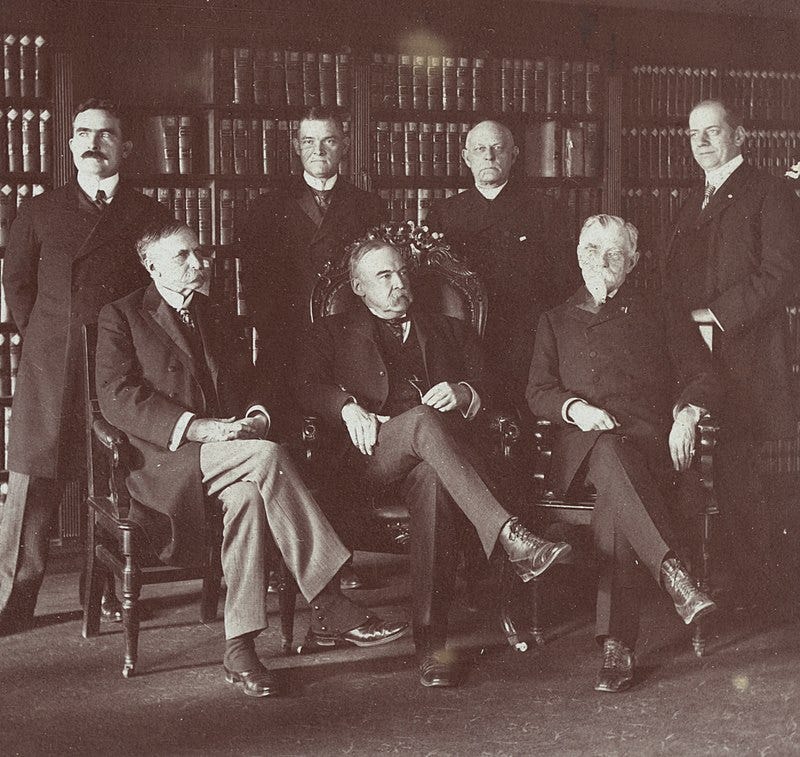
This is how change began.
The strike went on for five full months, finally coming to an end in late October with a compromise brokered by Roosevelt’s arbitration commission. The miners received a 10% wage increase and a nine-hour workday, though not full union recognition.
While they didn’t receive 100% of their demands, it is more important to note that, for the first time, the federal government had acknowledged that workers had legitimate grievances and deserved a seat at the table.
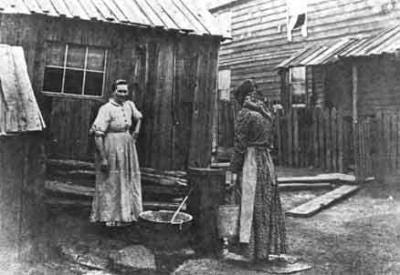
Like the Pullman Company and many other larger conglomerates, Pennsylvania coal companies established company towns, better known as “the Patch.” And like those other company towns, the communities were entirely owned by the mining companies—every house, every store, even the churches. For the families living in those Pennsylvania coal patch towns, the strike meant months of uncertainty and hardship.
When the miners decided to go on strike, their families lost not just their paychecks but their entire support system.
The women of the patch, the wives, mothers, daughters, and all those who cared for the workers became the unsung heroes of the strike. In those five months they stretched meager savings and bartered with neighbors. They kept families fed while the miners fought for dignity underground. The solidarity among these families was remarkable, as they shared food, watched each other’s children, and maintained hope when the future looked bleak.
Don’t forget to give this post a like and restack!!
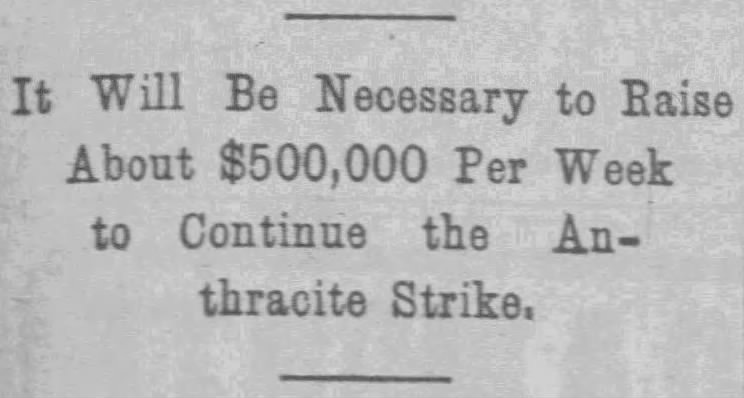
The Anthracite Strike is notable because not only did Theodore Roosevelt’s intervention change the narrative of a President intervening during a company strike, but it also earned him a special place in the hearts of working families. Roosevelt recognized that industrial disputes required balanced solutions. This was his “Square Deal” philosophy. The idea that every American deserved a fair chance began with this coal strike.
The 1902 Anthracite Coal Strike marked a turning point in American labor relations. It established the principle that the federal government could serve as a neutral mediator rather than simply acting as the enforcer of business interests. This precedent would influence labor relations for decades to come and is a strike we should take a moment to learn more about, given its profound impact on not only the United States' history but also the history of our ancestors who were affected by it.
If your ancestors lived in the Valley and Ridge Province of the Appalachian Mountains of Pennsylvania’s anthracite regions during the early 1900s, they were likely touched by this historic strike. The United Mine Workers of America kept detailed membership records, and many local historical societies maintained archives of coal patch town life. Company store records, school attendance logs, and local newspaper coverage from 1902 can reveal how your family weathered this pivotal moment.
Look for your family surnames in areas like the Schuylkill Valley, Lackawanna County, or the Wyoming Valley. These were the heartlands of anthracite mining, where families had to choose between solidarity and survival.
The next time you adjust your thermostat, remember the coal-dusted faces of the miners who fought not just for better wages but for the recognition that their labor and their lives had dignity and worth.
Resources:
Each one of these links will lead you to a different resource that will help you further research the Anthracite Strike or records of the coal miners who both worked for and went on strike.
United Mine Workers of America Collection & Archives: this site may offer information about the union's role during the strike, including member records and historical accounts.
Pennsylvania Historical and Museum Commission: holds historical markers and materials about the strike, including information about the strike's impact on communities
Theodore Roosevelt Center: The Theodore Roosevelt Center at Dickinson State University has resources related to President Roosevelt's involvement in mediating the strike.
The U.S. Department of Labor: provides information about the strike's impact on labor policy and the role of the U.S. government in its resolution.
Also, always remember to reach out to historical and genealogical societies in the area you are researching, and, of course, local libraries.
Thank you for enjoying this Quick History Tidbit!!
To learn more about Genealogy by Aryn - head over to GenealogybyAryn.com, stop by and say hello on Bluesky - Instagram - Facebook - YouTube
Be sure to check out my Etsy Shop and stop by my Genealogy Shop.
Looking to learn more about writing your family history? Check out From Research to Novel!
For more information about my Genealogical Services visit GenealogyByAryn.com or email me at aryn.genealogy@gmail.com. For more information on Writing Services - visit ASYounglesAuthor.com
Genealogy by Aryn is a reader-supported publication. To receive new posts and support my work, consider becoming a free or paid subscriber.
You made it to the end!! Thank you for reading. See you next time!






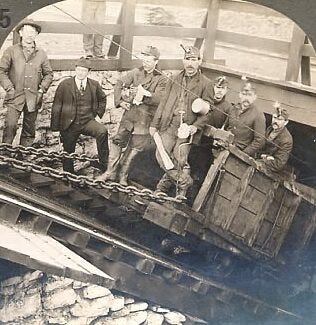
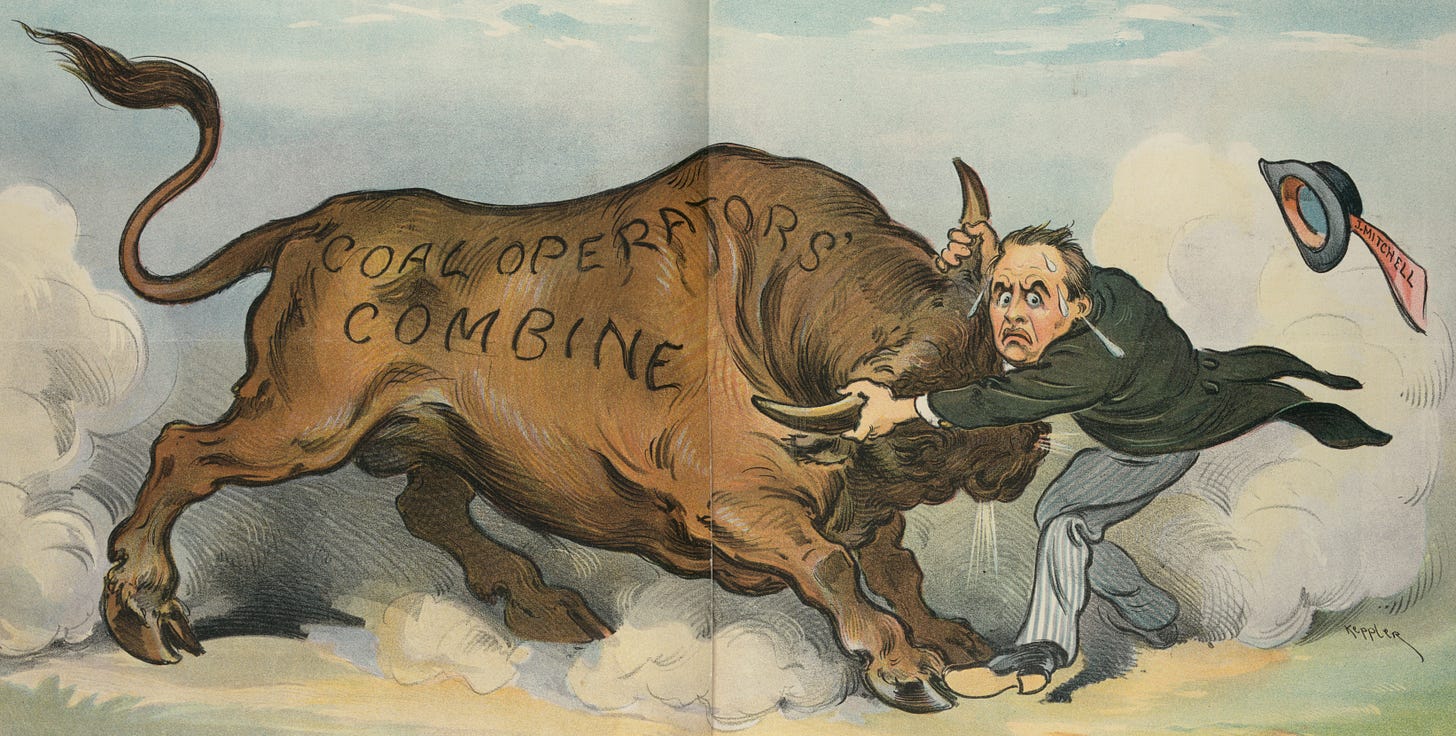

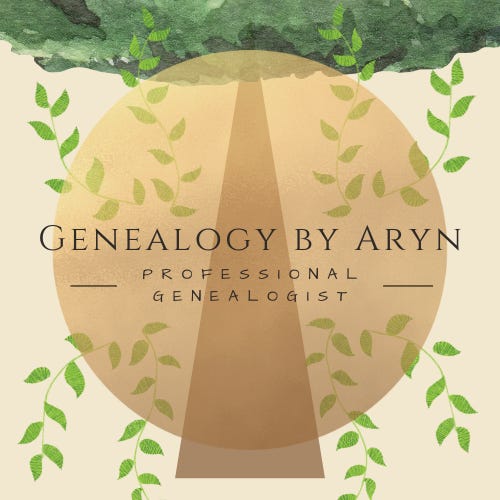
I have ancestors in Fayette County, Pennsylvania, who lived through the era. Very interesting to learn about their work history.
I have ancestors in Fayette County who lived through the era. Very interesting to learn about their work history.